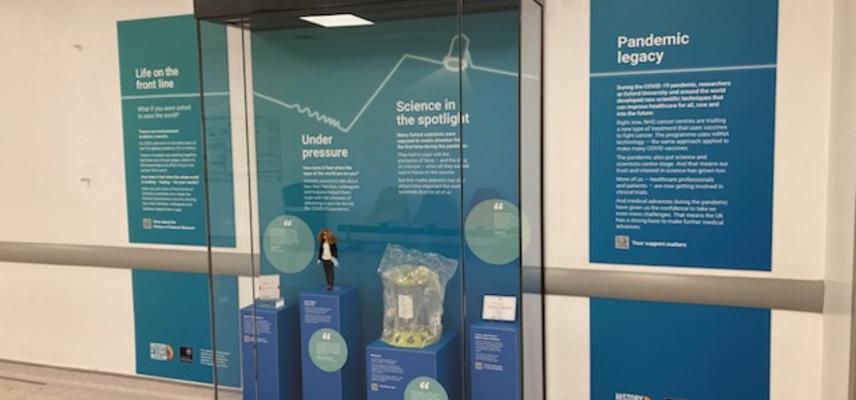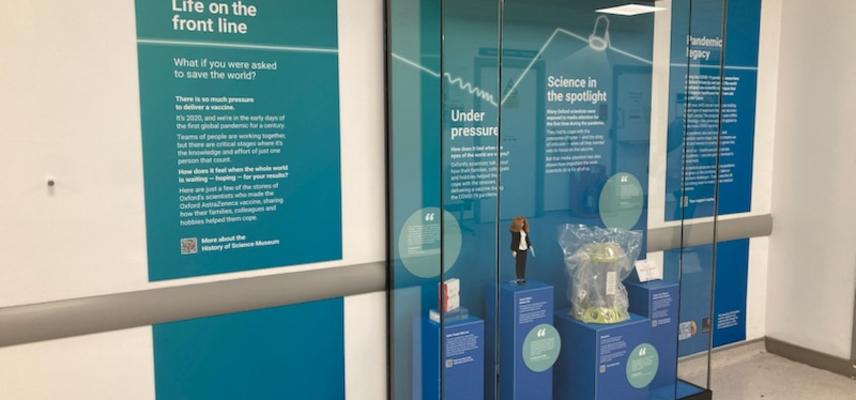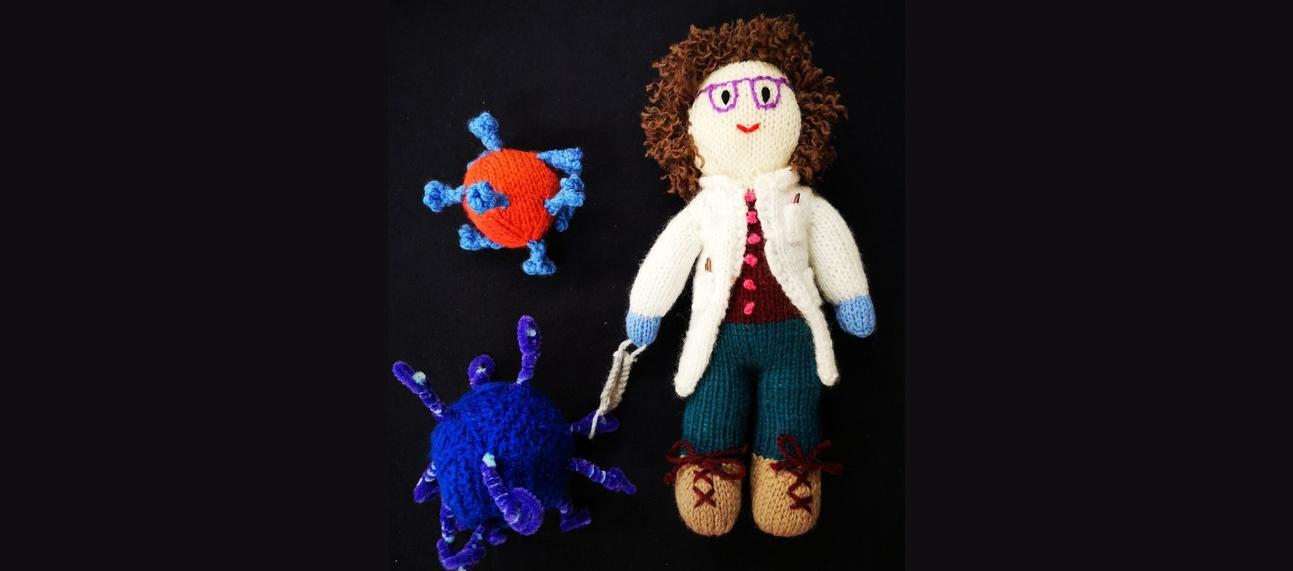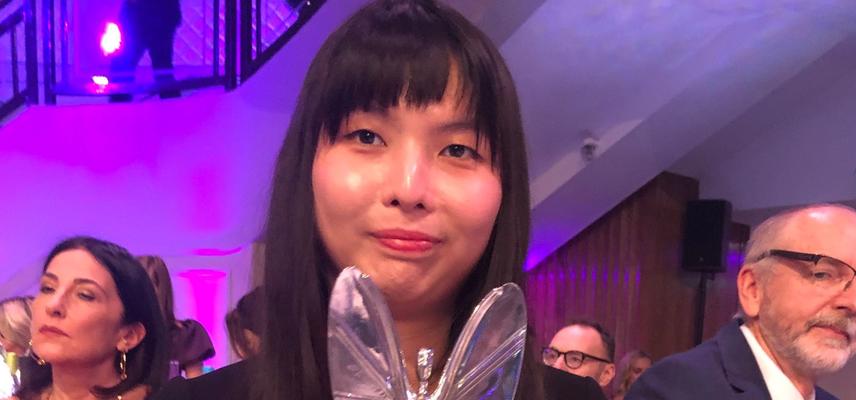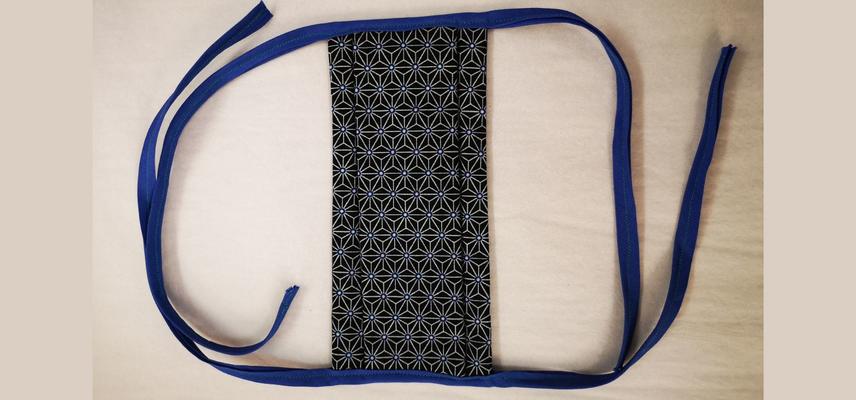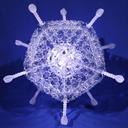What If You Were Asked to Save the World?
27 September 2022 - May 2023
Entrance Gallery | Free admission | Donations welcome
Each of us has our own story about the COVID-19 pandemic
But what was it like to be a scientist during that time?
They had to understand the virus, create the vaccine, test it for safety and effectiveness — and make enough for the whole world. And like all of us, they were living in difficult times and under intense emotional strain.
Go behind the scenes with the scientists who made the Oxford AstraZeneca vaccine.
And discover how to make the virus dance to your tune on VIANO — the virus piano.
Life on the front line (Feb 2025-)
Some of the objects and stories of Oxford scientists during the pandemic are now on display in the John Radcliffe Hospital.
Discover life on the pandemic's frontline (September 2022-May 2023)
In the Spotlight
On the Sidelines
Discover how a virus multiplies in your body
Introducing VIANO
What happens when a virus enters my body?
When viruses enter your body, they want to make copies of themselves – to replicate.
But they don’t have any machinery to make those copies – so they steal yours.
The COVID-19 (SARS-CoV-2) virus uses its ‘spike protein’ to break into your cells. It then replicates itself by hijacking your cells' copying machinery.
Sometimes, the virus makes a few mistakes, and the copy is subtly different. If those changes make the virus copy more successful, that version is copied again and again. And in time, it becomes the leader of the virus pack – a new variant.
What is VIANO?
The Virus Piano - VIANO - puts you in the driving seat of the copying machinery.
You’ll create a new version of the spike protein’s ‘battleground’ section. That’s the part which the virus uses to break into your cells, and which antibodies — produced by a vaccine — also target as they try to stop the virus infecting you.
How can I play?
Drop by the Museum for a visit — or book your free museum ticket.
The team who created VIANO explain the science behind the “Virus Piano”
What is COVID-19?
The COVID-19 pandemic, caused by severe acute respiratory syndrome virus 2 (SARS-CoV-2), is the third outbreak of a coronaviral infection since the turn of the century, after severe acute respiratory syndrome coronavirus (SARS-CoV) in 2002, and Middle East respiratory syndrome coronavirus (MERS-CoV) in 2012.
The ease of transmission of SARS-CoV-2 makes it the most disruptive and deadly among this group of pathogens, with devastating consequences for health and economies worldwide. The frequent emergence of strain variants is a challenge in combating the virus.
VIANO invites you to explore first-hand how such strain variants arise.
How does the COVID-19 virus infect my body?
The name coronavirus stems from the corona — or ‘crown’ — of proteins at the outer perimeter of the virus particle.
These proteins, called “spike proteins”, allow the virus to invade the cells of their hosts and hijack its replication machinery to produce progeny virus. For this, the genetic material of the virus, which is stored as ribonucleic acid (RNA), must be copied by molecular machines called ribosomes.
The viral genome can be written down as a sequence of the letters A, C, G, U, which represent the nucleotides that make up the genetic information. Triplets of letters (e.g. ‘GUA’), called codons, encode the amino acids (e.g. Valine), which are the building blocks of proteins.
The spike protein, that you can see in VIANO, is encoded by 1,273 codons.
How do variants happen?
When the genetic material of the virus is copied by the host copying machinery — called RNA polymerase — it often introduces random errors by inserting the wrong letter.
These changes to the coding sequence are called mutations.
This, in turn, results in a change in the protein that is produced by a molecular machine called ribosome from this sequence. If mutations introduce structural changes that are beneficial for the virus, then they establish themselves in the viral population.
This process is called selection and is the mechanism by which new viral strain variants emerge in nature. An example are the mutations in the spike protein of the Omicron strain, which make this variant more infectious than others.
How does VIANO work?
In VIANO, you play the part of the polymerase (the host copying machinery).
Using a four-key keyboard, you copy the nucleotide sequence of that part of the spike protein that is responsible for its entry into host cells (the “receptor binding domain”). It is also the region that vaccine-produced antibodies bind to in order to prevent infection.
Each codon is “played” as a three-note chord, with three keyboards representing each nucleotide position in the codon.
Getting a note wrong by copying the wrong nucleotide changes the codon. You can see on the screen which part of the spike protein is affected by this change. In VIANO, this also changes the music you generate, which is a proxy for the structure of the spike protein.
Like in nature, where some changes make the virus more infectious, some of your changes make the song “better”, and these are the ones that evolution selects for.
If this happens, you have created a new strain variant on in VIANO.




